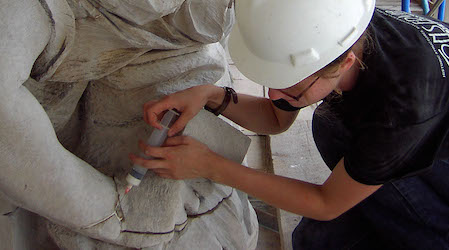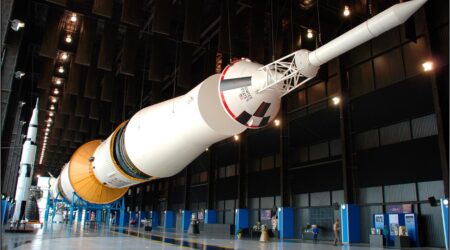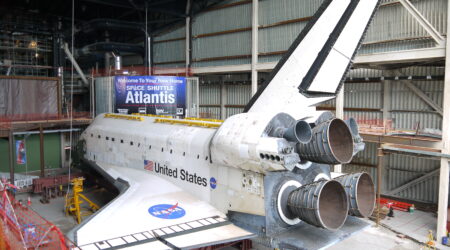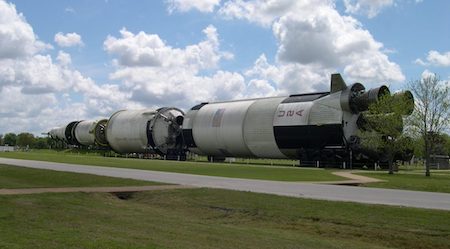The conservation of large-scale metal artifacts presents many challenges, the least of which is size. From inspection through treatment and beyond, the conservator must develop a regimen both thorough enough from a conservation viewpoint yet practical enough to be implemented on a large-scale and possibly by non-conservation professionals. It requires a delicate balance between the micro issues of surface preparation and coating application, with the technical aspects of surface profile, cleanliness, durability and reversibility, and macro issues relating to sustainability, safety and health, environmental (waste minimization and pollution prevention), and economic concerns. Consequently, success or failure is measured on a large scale.
Our involvement in the conservation of the Saturn V rocket and Atlantis spaceships allowed us to looks particularly at reducing the risks associated with coatings failure. As the economic means for maintaining cultural heritage is always tenuous, it is important for conservators to be proactive, evaluating current industry practice and seeking out new and viable alternatives through information sharing with different fields.
The coatings industry produces vast amounts of research and technical articles annually on the subject of premature coatings failure. Organizations such as the National Association of Corrosion Engineers (NACE) and the Society for Protective Coatings (SSPC) have developed more stringent guidelines to combat this problem which industry and government correct at great cost every year. Additionally, innovations in test equipment and techniques used in coatings inspection and monitoring provide more accurate information about how a coating is performing than ever before.
Conservators have successfully applied these guidelines set forth by the paint and coatings industry to inform their approach to treatment. Using examples of recent large-scale projects, including monuments, aero-space, military, and maritime artifacts, this paper will illustrated how to: identify coating failures and test for their root cause(s); choose an appropriate method or combination of methods to remove coatings, remove/reduce soluble salts and prepare the surface for coating; choose a proper coating system for the specific substrate and environment, and properly monitor the application of coatings using various tools and techniques.


















